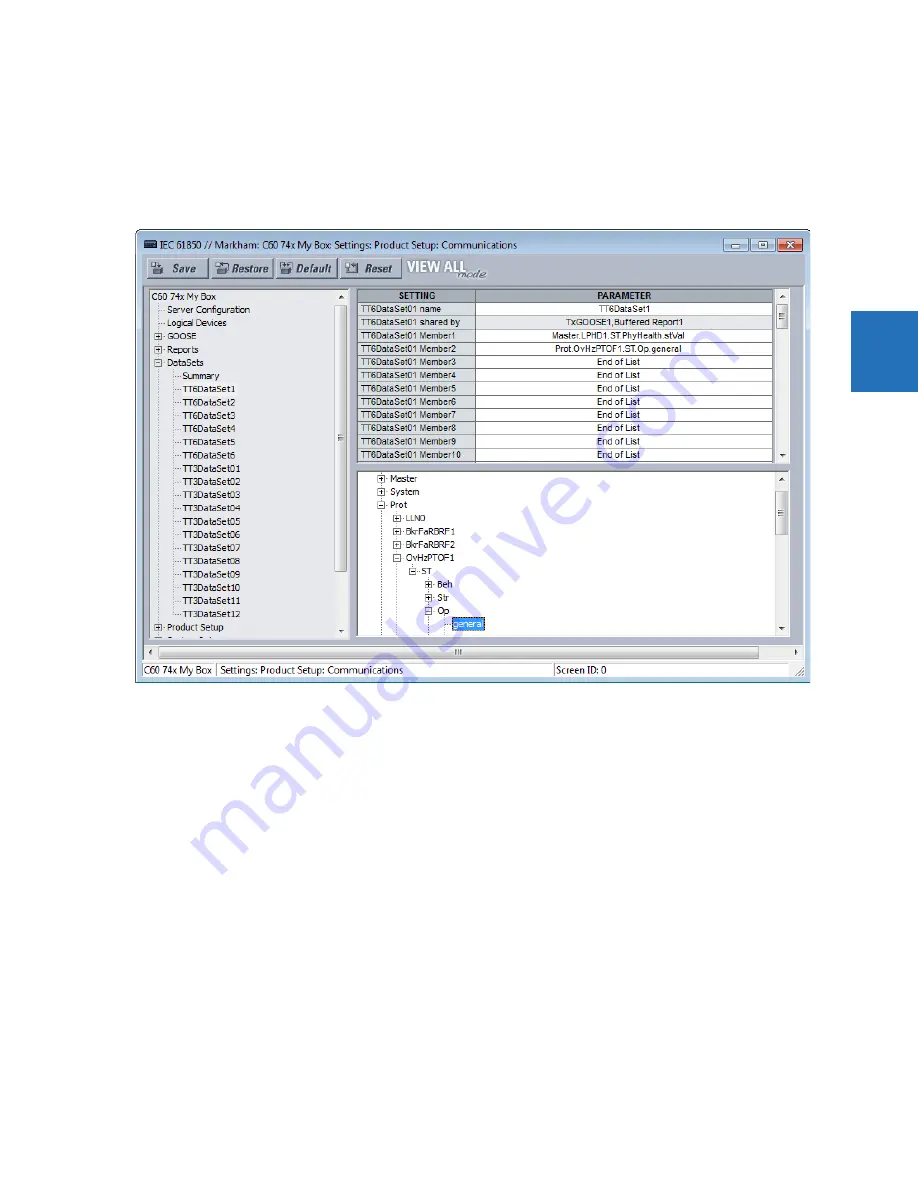
CHAPTER 3: IEC 61850 COMMUNICATION
OVERVIEW
UR FAMILY – COMMUNICATIONS GUIDE
3-7
3
ldInst is the logical device instance name (Master, Prot, Ctrl, System, Meter or Gen)
LNName is the logical node name, including prefix, class name, and instance number
fc is the functional constraint (EnerVista UR Setup uses only ST and MX)
doName is the data object name, including sub-data objects if any
daName is the data attribute name, including sub-data attributes if any
Figure 3-3: IEC 61850 DataSets
3.1.4 TxGOOSE
GOOSE is a service for communicating trip and blocking signals between IEDs. It is expected to be executed in the order of
three milliseconds for Type 1A "Trip" messages within a substation. Publishing of each GOOSE message is controlled by a
control block in the information model of the publishing device, which since UR 7.30 is represented by a TxGOOSE element.
Each GOOSE message includes the values of all of the members of the dataset to which it is configured, and a number of
fields that can be used by the subscriber to identify the particular GOOSE message it subscribes to. The identification fields
are as follows:
•
Destination MAC address — A multicast address that selects the set of destination IEDs
•
Source MAC address — A globally unique identification of the publisher
•
APPID — A number that is recommended by the standard to be unique within the system
•
gocbRef — A reference to the control block object that controls message publishing
•
datSet — A reference to the dataset whose members are published
•
goID — A string that allows a user to assign an identification to the GOOSE message
•
confRev — Configuration revision number to identify changes affecting message content
•
ndsCom — A Boolean flag that indicates the publisher needs to be commissioned
•
numDatSetEntries — The number of members in the dataset
















































